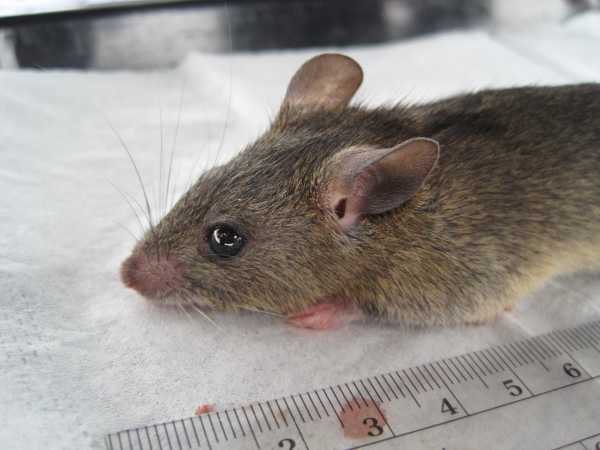
If you want to understand West Africa’s largest-ever Lassa fever outbreak, which has killed 78 people so far, you need to know about rats.
But first: Yes, there is an outbreak of the deadly, Ebola-like hemorrhagic fever in one of the most populous countries on earth. When severe, in about 10 to 20 percent of cases, Lassa does horrible things to the body: It replicates in the internal organs and central nervous system, causing its victims to bleed out of every orifice or go into shock. Most people will experience mild symptoms — fever or a headache — but even in those cases, Lassa can lead to permanent deafness.
This year, Lassa has exploded in Nigeria. Since January 1, the Nigerian health department has recorded 353 confirmed cases and 1,121 suspected cases (as well as 78 deaths) — numbers that surpass the case totals in all previously recorded outbreaks in West Africa.
And right now, the outbreak isn’t contained: Health officials expect more cases and deaths before it’s over. There’s also no vaccine to prevent the disease, which is part of the reason the World Health Organization recently named Lassa one of eight diseases most likely to spark a public health emergency.
Lassa is endemic in Nigeria, so it pops up every year. But researchers don’t know exactly why this year’s outbreak is so large or if the virus is more transmissible than usual. But they do think rats may be playing a role — specifically, that climate change and population growth may be affecting rodents in West Africa in ways that are helping Lassa spread.
Rats are immune to Lassa and can spread it to humans
Most infectious diseases in humans are zoonotic, meaning they originate in animals and can spread to people at opportune moments, sparking outbreaks. For Lassa, the animal “reservoir” is the multimammate rat. These aren’t the urban dwellers that scurry down dark alleyways in cities like New York. (Those are usually Norway rats or roof rats.) Instead, their natural habitat is the agricultural land around villages in West Africa.
At the end of the rainy season in Nigeria, around September, rodent populations peak, having thrived on all the food available in the lush farms. Then dry season hits. Around October, farmers start to burn off their crops to clear them out for a new season of planting the following year. This pushes the rats out of the croplands and into villages in search of food.
Related
Trump vs. “disease X”
Some of these rodents may carry the Lassa virus. When they swarm the villages, humans can pick up the virus through contact with rat urine and feces — or from eating the sick rats.
“The rat is actually a delicacy,” explained Christian Happi, director of the African Center of Excellence for Genomics of Infectious Diseases in Osun State, Nigeria. “People in remote areas of Africa will eat [the rats] without a second thought. It’s a major source of protein.”
Once people are infected with the virus, they can also infect others around them who come into contact with their bodily fluids.
So that’s what the Lassa rat-human connection in Nigeria looks like. Which brings us to the next question: Why is the disease becoming more common?
Climate change and human population growth are changing rodent ecology
This year’s outbreak has reached 18 of Nigeria’s 36 states, according to the World Health Organization (WHO). While it is the largest ever recorded in Nigeria, it’s also part of an upward trend in cases. There were more than 700 suspected cases in 2017, and more than 900 in 2016 — up from 430 in 2015.
So what’s going on here?
First, there may be a detection bias, said Pierre Formenty, who leads the WHO’s viral hemorrhagic team. More awareness about Lassa fever and better surveillance and diagnostic testing in the past few years may be picking up more cases. “However, this alone cannot explain the current trends,” he added.
Researchers are working on understanding a potential link between a rat population boom (and more Lassa cases) and global warming.
“Warmer weather will produce more food in the fields for a longer period of time,” Robert Garry, a professor of microbiology and immunology at Tulane University School of Medicine in New Orleans, said. “Each litter of rodents will have more survivors. Rodents also like it hot — that’s why they produce nests and huddle. So the rodents will spread north to areas that now have a more suitable climate.”
Rodents also tend to breed more in warmer weather, so even a mildly warmer climate can help produce more rats.
Related
4 reasons disease outbreaks are erupting around the world
Unlike human populations, the magnitude of population growth among small mammals can be 10 or 20 times larger in favorable climatic conditions — which includes periods of intense rain, according to Daniel Bausch, the director of the UK Public Health Rapid Support Team. “Heavy rains at the right time produce a lot of growth of food that animals eat in crops, and promote heavy breeding,” he said.
Researchers have linked heavier rainfalls with a higher risk of Lassa fever outbreaks. “We don’t know why,” said Lina Moses, a clinical assistant professor who studies Lassa with Tulane University School of Public Health and Tropical Medicine, “but something about rainfall either increases crop production or impacts the population of the rodents.”
So climate change, the more extreme weather it brings, and shifts in the ecology of rodents may be expanding their territory and promoting breeding. “The more rodents, the more Lassa being transmitted between rodents, and the more people infected with Lassa,” Moses said. (And it’s not just Lassa — researchers believe bird flu, cholera, Lyme, and many other diseases are being made worse by global warming.)
It doesn’t help that human populations are also expanding in size and geographic range; this may also be contributing to the spread of Lassa. Nigeria is the seventh-most populous country on the planet. More people need more places to live and more food to eat.
In a model Moses helped develop, converting land to agricultural use may also be playing a role in the Lassa virus expansion. “Because these rodents love to live in agricultural environments, [this may] be increasing the risk of Lassa fever,” she told Vox.
This year’s outbreak is starting to come under control
Researchers don’t yet have the data to fully grasp what’s going on in Nigeria this year. They’re also trying to understand if the virus has mutated in a way that’s made it spread more easily.
But Bausch noted the Nigerian medical mystery doesn’t end with Lassa. A recent outbreak of monkeypox — another rodent-borne disease, despite its name — was also more widespread across different regions of the country.
“I think it’s interesting that you have monkeypox and Lassa,” Bausch said, “two rodent-borne diseases that have seen peaks of transmission this year. I would suspect the underlying determinants are ecological determinants that have favored populations of small mammals.”
For now, the Nigeria Center for Disease Control is working with the WHO, the US Centers for Disease Control and Prevention, the UK Public Health Rapid Support Team, and other local and international partners to control the outbreak.
The latest situation report out of Nigeria suggests Lassa may have peaked already. The researchers I spoke to were optimistic; while they anticipate more cases and deaths this year, there’s now a lot of global focus and resources focused on controlling Lassa. The WHO has also deemed the risk of regional spread low.
Plus, the seasonal nature of Lassa outbreaks suggests this one will be over soon enough — until next year, which, if climate change trends hold, will be even warmer than last.
Sourse: vox.com






